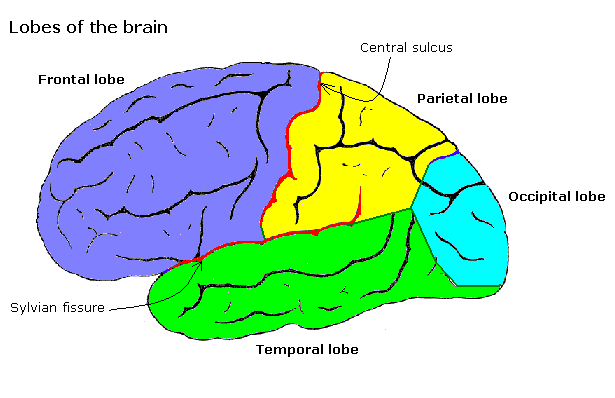
Imagine an elephant. What happens inside your mind? As you processed the previous sentence, you might have visualized the animal, or you may have heard your inner voice utter the word. Some of you may have even experienced a sudden emotional response—happiness, sadness, or perhaps even fear—arising from the mental imagery of this admittedly large herbivore.
Thought is tricky. It is, by and large, a universal experience, yet at the same time, innately subjective. No two people think identically. However, there are a few general cognitive patterns common to us all. For instance, most people fall under two major modes of thought: we either engage in verbal thinking, where our inner dialogue takes center stage, and/or visual thinking, where mental images play a key role in our cognition.
The Battle of the Brain: verbal versus visual
It’s an age-old question: do we think in pictures or words? For the longest time, human cognition has primarily been conceived in two modes of thought: verbal and visual. Think about that ever-chatty inner voice — the one that never seems to take a break from narrating your life. Chances are, if you’ve got a persistent verbal commentator in your head, you’re leaning toward being a verbal thinker.
What does verbal thinking feel like?
Internal voices are sort of like personal guides for verbal thinkers. In an article on LiveScience, Dr. Hélène Lœvenbruck, a neurolinguistics researcher, explains this internal dialogue.
“By inner monologue, we mean that we can have private speech that’s addressed to ourselves and that is carried out without any articulation or sound,” opined Dr. Lœvenbruck.
People experience this monologue in various ways. Some hear thoughts in their voices, while others tune in to an impersonal, all-knowing narrator. And then, some play host to more than one voice. Imagine this scenario: an individual whose inner voices take the form of an elderly Italian couple. This intriguing case was highlighted in a Guardian article and sheds light on the diverse nature of verbal thought processes.
“I have no idea where this has come from. It’s probably offensive to Italians,” explained the person in question.
“They passionately argue either side,” she says. “It’s really useful because I let them do the work, so I don’t get stressed out by it.”
Such eccentricities highlight the many dimensions of verbal thinking. Dr. Lœvenbruck there are three main dimensions of verbal thought: dialogality, condensation, and intentionality.

Dialogality
Let’s rewind to the example of the person whose inner voice — or rather, voices — is an old Italian couple. This person reported that the voices often chatted and even bickered with one another. This quality of multiple voices conversing with one another refers to the dialogality of our inner voices. Essentially, our inner voice isn’t just the first 10 minutes of a late-night show. We’re capable of having full-fledged conversations in our brains.
Condensation
Inner voices aren’t Shakespearean. They aren’t particularly verbose or composed either. A lot of the time, inner voices are incoherent and messy. We switch between fleeting, scattered thoughts to fully developed essays. This is the inner voice’s condensation in action.
Intentionality
Verbal thinking isn’t always an entirely active process. Sometimes, thoughts just pop up. Out of the blue, your inner narrator can start up a conversation with itself. This quality, involving the control of our thoughts, is known as intentionality.
How common is the “inner voice”?
Traditionally, verbal thought has long been billed as the ‘primary’ mode of thought but it’s essential to recognize that not everyone thinks this way. Studies suggest that only approximately 30 to 50 percent of individuals perceive their thoughts through inner speech. Even among those who do, they don’t exclusively perceive their thoughts verbally. Verbal thinking doesn’t exist in isolation. Visualization often accompanies inner speech. For instance, try writing something down. While you can certainly hear yourself narrate the words, some can even visualize the sentences and the individual words coming together in the mind’s eye.
When do we use visual thinking?
Consider:
- Your loyal canine companion
- Your siblings or parents
- Your latest beach excursion
- Messi’s iconic World Cup victory in Qatar
- Your go-to comfort food
Images of our drooly best friends, cherished memories with the family, Messi’s unadulterated joy at finally lifting the Cup, and the comforting allure of a favorite dish, like a Sunday roast, flood your brain. Thoughts like these, come to life in our brain. We can see them in the eye of our mind.

Long-term memory
Visual thinking is an ancient mode of cognition. It predates verbal thinking and is generally the go-to process for the brain when it comes to processes like episodic memory — a type of long-term memory. Autobiographical thoughts — things like personal experiences, specific life events, places, and objects — are largely perceived as pictures or images, as opposed to inner speech. When people reminisce about stuff, they often “see” the scenes and details in their mind’s eye. This visual aspect of episodic memory highlights the role of visual thinking in capturing and reliving personal experiences. Similarly, visual thinking plays a massive role in other mental processes like object manipulation and self-projection.
Object manipulation
Object manipulation refers to the mental process of interacting with physical objects. It’s how we catch a ball in mid-flight or shape dough. This process serves as the bridge between our intent to act and the dexterous control over our hands (or other body parts) to grasp, move, shape, or otherwise influence the position or state of an object.

Object manipulation can range from basic activities of daily living — like picking up our toothbrush, to more intricate tasks, such as typing out words using a keyboard — that require a high level of manual dexterity and coordination. The brain’s ability to coordinate visual, tactile, and motor information is crucial for successful object manipulation.
Self-projection
When thinking about the future, do we picture or hear future us? This cognitive mechanism we use to explore and plan for future possibilities, foster behaviors, and set goals for ourselves is known as self-projection. Similar to the intentionality dimension of verbal thinking, self-projection is precisely what it sounds like — an endeavor to mentally project ourselves into situations; to perceive ourselves in our minds.
It isn’t inherently limited to any one mode of thinking.
For instance, while some aspects of projection involve a verbal component, such as verbal affirmations, a significant portion of self-projection is visual. Mentally simulating future scenarios, imagining oneself in different situations, and picturing the outcomes of one’s actions are all robust examples of utilizing visual thinking to facilitate self-projection.
The interplay of verbal and visual thinking
People aren’t as one-dimensional as they might believe. Even those who strongly identify as verbal thinkers may, at times, inadvertently engage in visual thinking. Processes like self-projection provide windows into the inner workings of the human mind. No single brain is inherently either verbal or visual. Instead, there exists an interplay between the two modes to coherently process all human thought.
Interesting questions raised by science
In a bid to investigate this interplay, researchers from Brown University, Harvard Medical School, MIT, and the Massachusetts General Hospital set up a study to explore the extent of overlap between verbal and visual thinking. In an article with the Harvard Gazette, lead researcher Elinor Amit elaborated on their line of questioning.
“The question we wanted to answer was: Can you engage in one without the other modality popping up?” Amit said. “Can you use one without invoking the other unintentionally?” explained Amit.
Amit and her team conducted two experiments to delve into the dynamics of verbal and visual thinking. The first, a behavioral experiment conducted in lab settings, involved tasks where participants engaged in verbal and visual thinking based on prompts and were asked to silently imagine a sentence or mental picture. The second experiment was a bit more technical and used functional Magnetic Resonance Imaging (fMRI) machines to scrutinize neural activity in the brain generated as a result of given tasks.

After completing the tasks, all participants were asked four questions:
- How clear were the images they created?
- How clear were the sentences they created?
- How clear were any images they unintentionally created?
- How clear were any sentences they unintentionally created?
Amit explained the type of tasks and the subsequent line of questioning posed to the participants.
“So in one trial you might be asked to create an image, and we would ask you how clear that image was. In the next trial, we might ask you to create an image again, but then ask you how clear was the sentence you unintentionally created,” clarified Amit.
What did they discover? Let’s find out.
Insights from research
Contrary to very popular belief, verbal and visual thinking are not independent processes. The study unveiled an asymmetrical relationship between the two, highlighting that even when intentionally engaging in verbal thought processes, visual thinking almost always emerges as a by-product.
Imagine needing to stock up on essentials and creating a grocery list. As you mentally list the items (verbal thinking), your mind simultaneously conjures images of the products on the shelves (visual thinking). For instance, if you jot down ‘orange juice,’ not only do you hear yourself say the words, but a visual of a glass or gallon of OJ also pops up in your mind.
This wasn’t all the study came up with. Not only are the processes intertwined, but they also operate at varying levels. Generally, verbal processes are more pronounced and verbose—especially when intentional. Visual thinking, on the other hand, operates at the same level of intensity regardless of intent.
While verbal thinking can lead to more pronounced, intricate, and elaborate thoughts based on our effort, visual thinking presents a different dynamic. Contrary to prior belief, the images in our heads aren’t produced in high definition. It isn’t a continuous movie but rather a series of hazy stills.
“We found that people generated more robust verbal representations during deliberate inner speech … but they generated visual images regardless of whether their intent was to visualize something or to think verbally,” explained Amit.
The study not only clarified the overlap between the two processes but also assigned evolutionary roots to them. The prevalence of visual thinking in our minds has a purpose – language evolved long after our capacity to process stimuli. That is, to think!
Conclusion
In the realm of cognition, phenomenology, and psychology, questions as seemingly straightforward as ‘Do we think in pictures or words?’ defy easy answers. Contrary to popular belief, even the most eloquent thinkers aren’t exclusively verbal, and the same goes for visual thinkers. Perhaps a more insightful inquiry is, ‘Which situations or processes prompt extensive verbal or visual thinking?’ However, even this line of questioning seems simplistic, considering that visual thinking, albeit low clarity, consistently lurks in the recesses of our minds.

The human mind is a vast expanse that cannot operate within the confines of just two modalities of thought. For instance, let’s consider the example of spatial thinking — one of the many thought processes of the human brain. With spatial thinking, we’re talking about comprehending space. This facilitates an understanding of spatial configurations, such as distances, angles, and orientations. Such thought processes become vital when we have to navigate our surroundings. Imagine, sitting shotgun and navigating. While you may think you’re engaging your visual faculties — after all; you are using your eyes and picturing the route to your destination — you aren’t just thinking visually. Mostly, you’re thinking spatially.
Research from 2008 identified a link between verbal thinking and spatial thinking, especially in certain situations, such as when solving problems related to geometry. In problem-solving scenarios such as these, despite the obvious visual elements (geometrical shapes), it isn’t just enough to picture them. Deliberate and systematic thought processes are required. In such contexts, it becomes increasingly apparent that although visual and verbal thinking are predominant patterns, they don’t represent the full scope of human thought.






